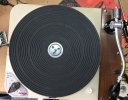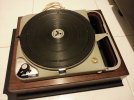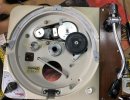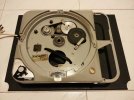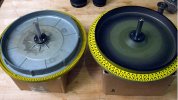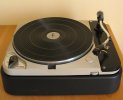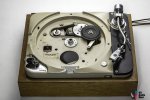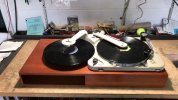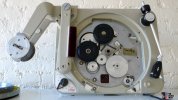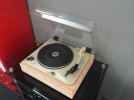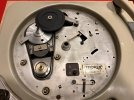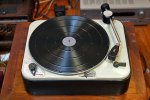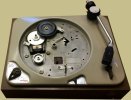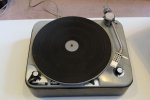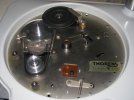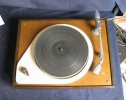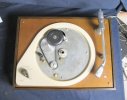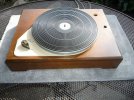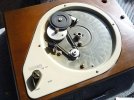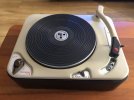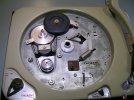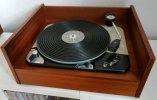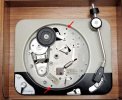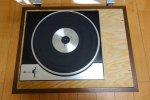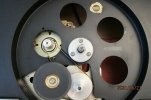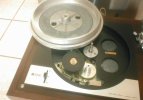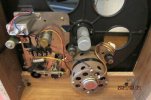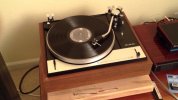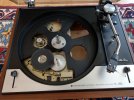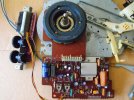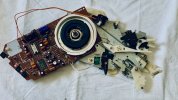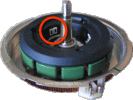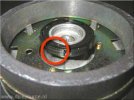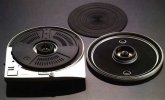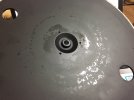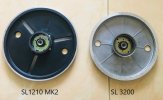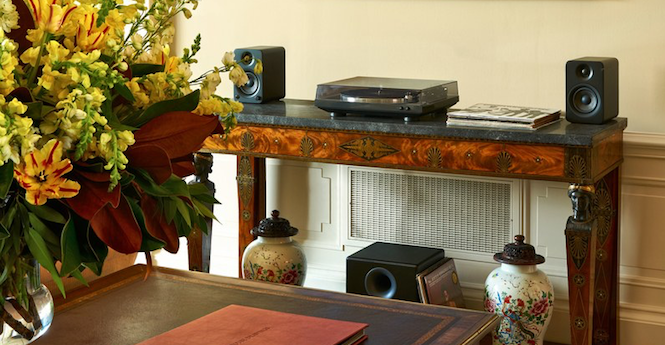reubensm
Well-Known Member
Recently i had a really nice discussion with a fellow forum member and good friend around the NAD 3020 amplifier, often considered among the most significant components that shaped audio history. Our conversation drifted across domains, and into turntables and we started talking about pieces of technology that defined the history of turntables. There was the stereo LP, direct drive motor, great tonearm designs, the magnetic cartridge and then we arrived at something known as the "T-Bar". That actually brought back some memories from my childhood. Many years ago, I think sometime around 1981, my father took me to his friends place (I don't remember what it was for). Many of you may now this gentleman by now as he is quite popular with Turntable enthusiasts across India who want to have a stylus re-tip job done. Yes, Mr. Mony indeed. Now this was the time when Japanese turntables from the likes of Technics, Pioneer, JVC, Akai, Sony etc ruled the world in Kerala (via the middle east).
So while the 2 gentlemen were talking and discussing stuff, it was usual for Mr. Mony to play a LP through his home built amplifiers via his corner horn speakers or he would at times wire up some of the amplifiers that came in for repairs, for us to listen to (my Dad was also a customer of his, having bought an amplifier from him). While like any kid in a candy store, I used to enjoy watching all the fancy amplification gear play (most of them would have been without the top cover so it was fun to have a look inside) and admire those huge corner horns that he had. I almost never looked at the inconspicuous and boring looking turntable that he had, and only glanced in that direction actually when he would either flip over or change records.
Fast forward to the early 2000s, I was living in the US and while on a weekend visit to a friend's place, I came across this same turntable in use, belonging to his Dad. This was my introduction to the AR XA, and I found out later that it is one of the most significant turntables in history and one of the most popular too (just like the NAD 3020). In today's world, this turntable is almost forgotten but its worth while considering this one, if you can find one in good condition.
Edgar Villchur, the legendary audio designer, with the Acoustic Suspension philosophy for speakers came up with the idea of using a "T Bar" which served as the mount for the platter and tonearm, suspended from the main chassis. This isolated the 'business side' of the turntable from the plinth/mounting board and cabinet, thereby making the tunable absolutely pure-sounding. There are famous stores of crowds of commuters visiting the AR listening room at New York's Grand Central Station for a demo and during some instances, Edgar himself demonstrated the turntable playing flawless despite being hit with a hammer while working. This turntable was launched at a modest price of just under $60 in some markets and around $70 in others, at the time and became very popular. If you can find one in good nick, not a bad one to own. Here is Edgar himself speaking about the design and performance (his thoughts on the importance of the turntable as a source are also quite interesting).
Again Edgar was apparently the first to come up with the suspended chassis approach for belt drives however the controversy still rages on how a few years later, Thorens, Linn, etc came up with the same approach which they claimed to have developed independently.
The legendary AR XA turntable, a good choice over the likes of Thorens, Linn and others.
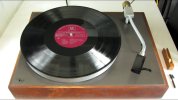
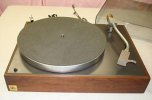
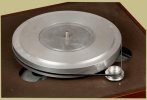
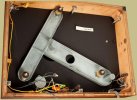
Note; these are random stock pictures for illustrative purposes only, hence cosmetic condition may vary
So while the 2 gentlemen were talking and discussing stuff, it was usual for Mr. Mony to play a LP through his home built amplifiers via his corner horn speakers or he would at times wire up some of the amplifiers that came in for repairs, for us to listen to (my Dad was also a customer of his, having bought an amplifier from him). While like any kid in a candy store, I used to enjoy watching all the fancy amplification gear play (most of them would have been without the top cover so it was fun to have a look inside) and admire those huge corner horns that he had. I almost never looked at the inconspicuous and boring looking turntable that he had, and only glanced in that direction actually when he would either flip over or change records.
Fast forward to the early 2000s, I was living in the US and while on a weekend visit to a friend's place, I came across this same turntable in use, belonging to his Dad. This was my introduction to the AR XA, and I found out later that it is one of the most significant turntables in history and one of the most popular too (just like the NAD 3020). In today's world, this turntable is almost forgotten but its worth while considering this one, if you can find one in good condition.
Edgar Villchur, the legendary audio designer, with the Acoustic Suspension philosophy for speakers came up with the idea of using a "T Bar" which served as the mount for the platter and tonearm, suspended from the main chassis. This isolated the 'business side' of the turntable from the plinth/mounting board and cabinet, thereby making the tunable absolutely pure-sounding. There are famous stores of crowds of commuters visiting the AR listening room at New York's Grand Central Station for a demo and during some instances, Edgar himself demonstrated the turntable playing flawless despite being hit with a hammer while working. This turntable was launched at a modest price of just under $60 in some markets and around $70 in others, at the time and became very popular. If you can find one in good nick, not a bad one to own. Here is Edgar himself speaking about the design and performance (his thoughts on the importance of the turntable as a source are also quite interesting).
Again Edgar was apparently the first to come up with the suspended chassis approach for belt drives however the controversy still rages on how a few years later, Thorens, Linn, etc came up with the same approach which they claimed to have developed independently.
The legendary AR XA turntable, a good choice over the likes of Thorens, Linn and others.




Note; these are random stock pictures for illustrative purposes only, hence cosmetic condition may vary
Last edited:


